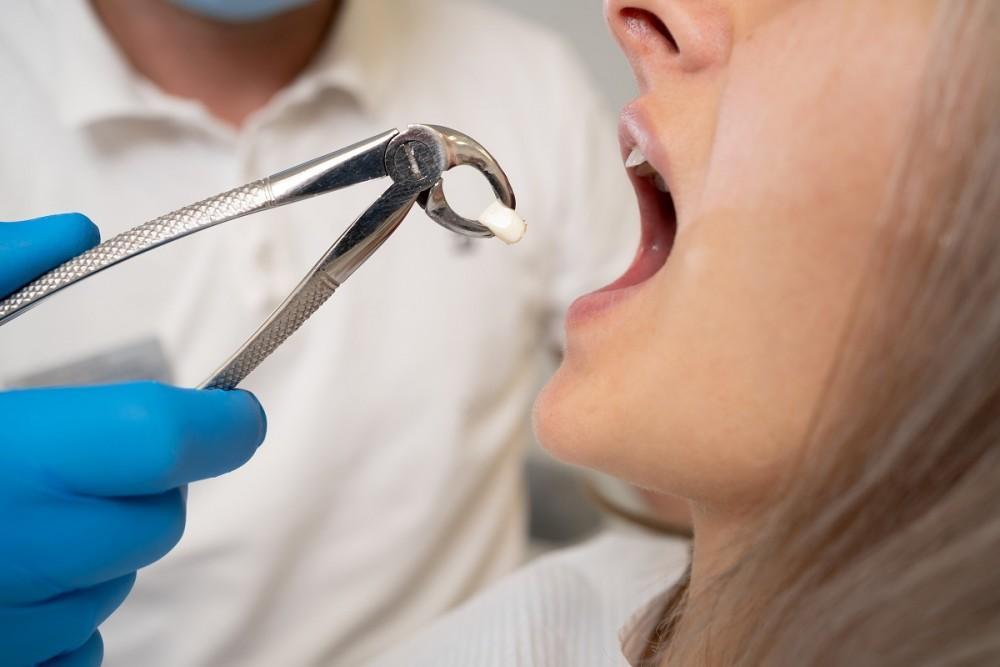Introduction
Tooth extraction is a dental procedure wherein a dentist removes a tooth from its position within the bone socket. While the extraction itself may not be painful due to the administration of local anesthesia, discomfort and pain can be experienced during the recovery period. This article will explore natural remedies and techniques to ease the pain associated with tooth extraction. If your tooth extraction was violent or easy, there are several methods you can try to alleviate any pain or discomfort you may be experiencing.
Understanding Tooth Extraction
Tooth extraction is a common dental procedure performed by dentists to alleviate pain and prevent further oral health complications. It may be necessary due to various reasons, including severe tooth decay, periodontal disease, overcrowding, or trauma. The dentist will carefully assess the tooth’s condition and determine whether extraction is the best course of action.
Managing Pain After Tooth Extraction
After the tooth extraction procedure, it is normal to experience some degree of pain or discomfort. The following techniques can help manage and alleviate this pain naturally.
Natural Remedies for Pain Relief
1. Cold Compress
The application of a cold compress to the affected area can provide relief by reducing both pain and swelling. Wrap an ice pack or a bag of frozen vegetables in a thin cloth and apply it to the cheek near the extraction site for 15 minutes at a time. Remember to take breaks between applications.
2. Saltwater Rinse
A saltwater rinse can help keep the extraction site clean and reduce the risk of infection. Mixing half a teaspoon of salt with eight ounces of warm water allows for the dissolution of the salt particles. Gently swish the solution in your mouth for about 30 seconds, then spit it out. It is recommended to perform this rinse multiple times throughout the day, particularly after meals.
3. Clove Oil
Clove oil contains natural anesthetic and antibacterial properties that can provide temporary relief from tooth extraction pain. Dip a cotton ball in clove oil and place it directly on the extraction site. Leave it there for a few minutes to numb the area. Exercise caution to avoid swallowing the oil while using it.
4. Tea Bags
Moist tea bags can help reduce pain and promote blood clotting at the extraction site. Steep a tea bag in hot water, squeeze out the excess liquid, and allow it to cool. Position the damp tea bag on the extraction site and softly bite down on it. This can help alleviate pain and control bleeding.
5. Turmeric Paste
Turmeric has natural anti-inflammatory properties that can help reduce pain and swelling. Combine one teaspoon of turmeric powder with a sufficient amount of water to form a paste-like consistency. Apply the paste directly to the extraction site and leave it for 15 minutes before rinsing gently with warm water.
Dietary Recommendations for a Speedy Recovery
The food you consume after a tooth extraction can significantly impact your recovery. Here are some dietary recommendations to promote healing and minimize discomfort.
1. Soft Foods
Stick to soft foods that require minimal chewing, such as mashed potatoes, yogurt, smoothies, and soups. Avoid hard, crunchy, or sticky foods that could irritate the extraction site.
2. Avoiding Hot and Spicy Foods
Foods that are hot and spicy have the potential to induce discomfort and irritation at the extraction site. Opt for lukewarm or cold foods during the initial stages of recovery.
3. Stay Hydrated
Adequate fluid intake plays a crucial role in facilitating a prompt recovery. Water and natural fruit juices can keep you hydrated and aid in the healing process.
4. Oral Hygiene and Care
Proper oral hygiene and care are crucial after tooth extraction to prevent infection and promote healing.
5. Gentle Brushing
During the initial 24 hours following the procedure, brush your teeth with care, ensuring to avoid the area of the extraction. After that, carefully brush the area surrounding the extraction site with a soft-bristled toothbrush.
6. Warm Saltwater Rinse
Rinsing your mouth with warm saltwater can help keep the area clean. Mix half a teaspoon of salt in eight ounces of warm water and gently swish it in your mouth. Repeat this rinse after meals.
7. Avoid Smoking and Alcohol
Engaging in smoking and consuming alcohol can impede the healing process and elevate the likelihood of infection. They can provide further guidance and address any concerns you may have, regardless of whether your extraction was violent or easy. Dental marketers have almost forgotten about good old-fashioned tooth extraction, but it remains an essential dental procedure.
6. Follow-up Appointments and Advice
It is crucial to attend follow-up appointments with your dentist to monitor the healing progress. Your dentist can offer additional guidance and address any concerns or questions you may have.
Conclusion
Tooth extraction can be accompanied by discomfort and pain during the recovery period. By following natural remedies, maintaining a proper diet, and practicing good oral hygiene, you can ease the pain and promote a speedy recovery. However, it is essential to consult with your dentist for personalized advice and recommendations based on your specific situation.

